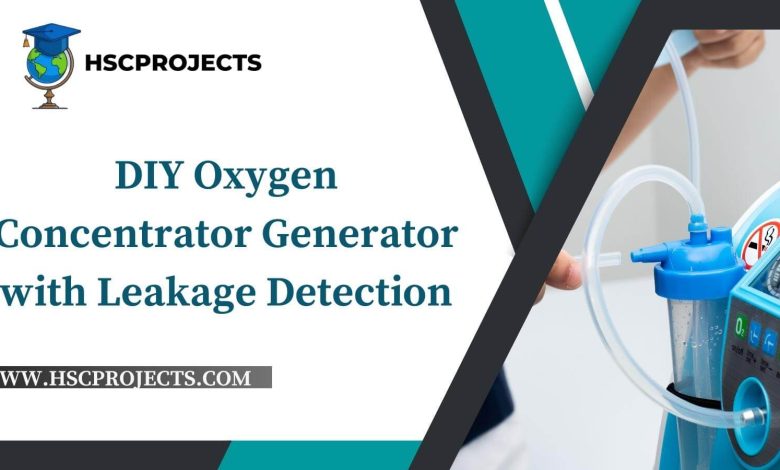
DIY Oxygen Concentrator Generator with Leakage Detection
Introduction
In the face of the ongoing COVID-19 pandemic, the demand for oxygen concentrators has never been higher. Traditional oxygen concentrators can be costly and hard to find during times of emergency. However, there is an alternative: building a DIY oxygen generator. Not only can you make your oxygen concentrator at home, but you can also include innovative features such as leakage detection for added safety.
Understanding the Basics
Oxygen concentrators, also known as oxygen generators, have been utilized across a wide range of industries since their invention in the 1970s. These machines separate oxygen from atmospheric air, making it available for medical and other applications.
The Concept
Our DIY project focuses on creating an oxygen generator machine that uses Pressure Swing Adsorption (PSA) technology, with an emphasis on safety features like leakage detection. The machine employs a microcontroller-based system, pneumatic pressure, zeolite vessels, and a range of sensors to accomplish this.
Components Required
- Atmega 328p Microcontroller
- Oxygen Sensor
- Pressure Sensor
- Pneumatic Pipes
- Pneumatic Valves & Joints
- Zeolite Vessel
- Pressure Vessel
- Electrical components like resistors, capacitors, transistors, etc.
How It Works
- Atmospheric air is initially compressed using an external compressor.
- This compressed air is then passed through zeolite vessels, where nitrogen is separated from the oxygen.
- The oxygen-rich air is stored in a second pressure vessel.
- The system employs pressure and oxygen sensors to monitor the levels of oxygen generated.
- In case of a leakage, the system automatically shuts off and triggers an alert.
Safety Measures
Given that high oxygen levels can fuel combustion, our machine includes a leakage detection system. If a leak is detected, a buzzer will sound, and the system will automatically shut down.
Important Note
This DIY oxygen concentrator is intended for educational and experimental purposes only. It is not fit for medical use as it does not guarantee the required level of oxygen purity.
Conclusion
By following this guide, you can learn how to make an oxygen concentrator at home that not only assists in times of emergencies like the COVID pandemic but also incorporates essential safety features.
Sample Code
// Declare pins
const int oxygenSensorPin = A0;
const int pressureSensorPin = A1;
const int buzzerPin = 13;
// Declare variables
int oxygenLevel = 0;
int pressureLevel = 0;
int leakThreshold = 20; // Threshold for leakage detection, adjust as needed
void setup() {
// Initialize the serial port
Serial.begin(9600);
// Initialize pins
pinMode(oxygenSensorPin, INPUT);
pinMode(pressureSensorPin, INPUT);
pinMode(buzzerPin, OUTPUT);
}
void loop() {
// Read sensor values
oxygenLevel = analogRead(oxygenSensorPin);
pressureLevel = analogRead(pressureSensorPin);
// Print sensor values for debugging
Serial.print("Oxygen Level: ");
Serial.println(oxygenLevel);
Serial.print("Pressure Level: ");
Serial.println(pressureLevel);
// Check for leakage by comparing sensor value to predefined threshold
if (oxygenLevel > leakThreshold) {
// Leakage detected, sound the buzzer and stop the system
digitalWrite(buzzerPin, HIGH);
while(1) {
// System halted
}
} else {
// No leakage, turn off the buzzer
digitalWrite(buzzerPin, LOW);
}
// Add your code to control valves, compressors, etc.
// Delay before next iteration
delay(1000);
}In order to download the PDF, You must follow on Youtube. Once done, Click on Submit
Follow On YoutubeSubscribed? Click on Confirm
Download DIY Oxygen Concentrator Generator with Leakage Detection PDF






